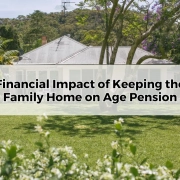How much does a nursing home cost in Australia?
Table of Contents
ToggleNursing homes are residential facilities that provide care and support to older adults who are unable to live independently. There are two main types of nursing homes in Australia: government-funded and privately funded. Government-funded nursing homes are subsidised by the Australian government, while privately funded nursing homes are not.
The cost of a nursing home in Australia can vary greatly depending on a number of factors, including the location of the nursing home, the type of nursing home, the level of care required, and the resident’s income and assets.
Costs associated with nursing home care
Here is a brief overview of the different costs associated with nursing home care in Australia:
Basic daily fee
All nursing home residents in Australia are required to pay a basic daily fee. This fee covers the cost of day-to-day living expenses, such as meals, laundry, and cleaning. The basic daily fee is set by the Australian government and is currently $63.57 per day (updated 20 September 2024).
Means-tested care fee
Some nursing home residents may also be required to pay a means-tested care fee. This fee is based on the resident’s income and assets. The amount of the means-tested care fee is calculated by the Australian government.
Accommodation costs
In addition to the basic daily fee and means-tested care fee, nursing home residents may also be required to pay an accommodation cost. This cost varies depending on the type of nursing home and the level of care required. The average accommodation cost in Australia is around $470,000 per year, but this can range from around $200,000 to over $1 million.
Other costs
There are a number of other costs that nursing home residents may also need to pay, such as the cost of extra services (e.g., physiotherapy, occupational therapy, speech therapy), amenities (e.g., hairdressing, internet access), and personal expenses (e.g., clothing, toiletries).
Factors that can affect the cost of nursing home care
Here are some factors that can affect the cost of nursing home care in Australia:
Location of the nursing home
Nursing homes in major cities and metropolitan areas are generally more expensive than nursing homes in regional and rural areas.
Type of nursing home
Private nursing homes are generally more expensive than government-funded nursing homes.
Level of care required
Residents who require a higher level of care will generally pay more.
Resident's income and assets
Residents with higher incomes and assets will generally pay more in means-tested care fees.
How to pay for nursing home care
There are a number of ways to pay for nursing home care in Australia, including:
Government subsidies
The Australian government provides a number of subsidies to help people pay for nursing home care. These subsidies include the Aged Care Pension and the Basic Daily Care Fee subsidy.
Private health insurance
Some private health insurance policies cover the cost of nursing home care.
Personal savings
Some people may be able to pay for nursing home care using their personal savings.
Selling assets
Some people may need to sell assets, such as their home, to pay for nursing home care.
Financial assistance options for nursing home care
There are also a number of financial assistance options available to help people pay for nursing home care, including:
Commonwealth Home Support Programme
The Commonwealth Home Support Programme is a government program that provides funding for a range of services to help people live independently at home. These services can include personal care, domestic assistance, and social support.
MyAgedCare
MyAgedCare is a government website that provides information and support to people who are considering or already receiving aged care services.
If you are considering or already receiving aged care services, I encourage you to visit the MyAgedCare website for more information and support.









